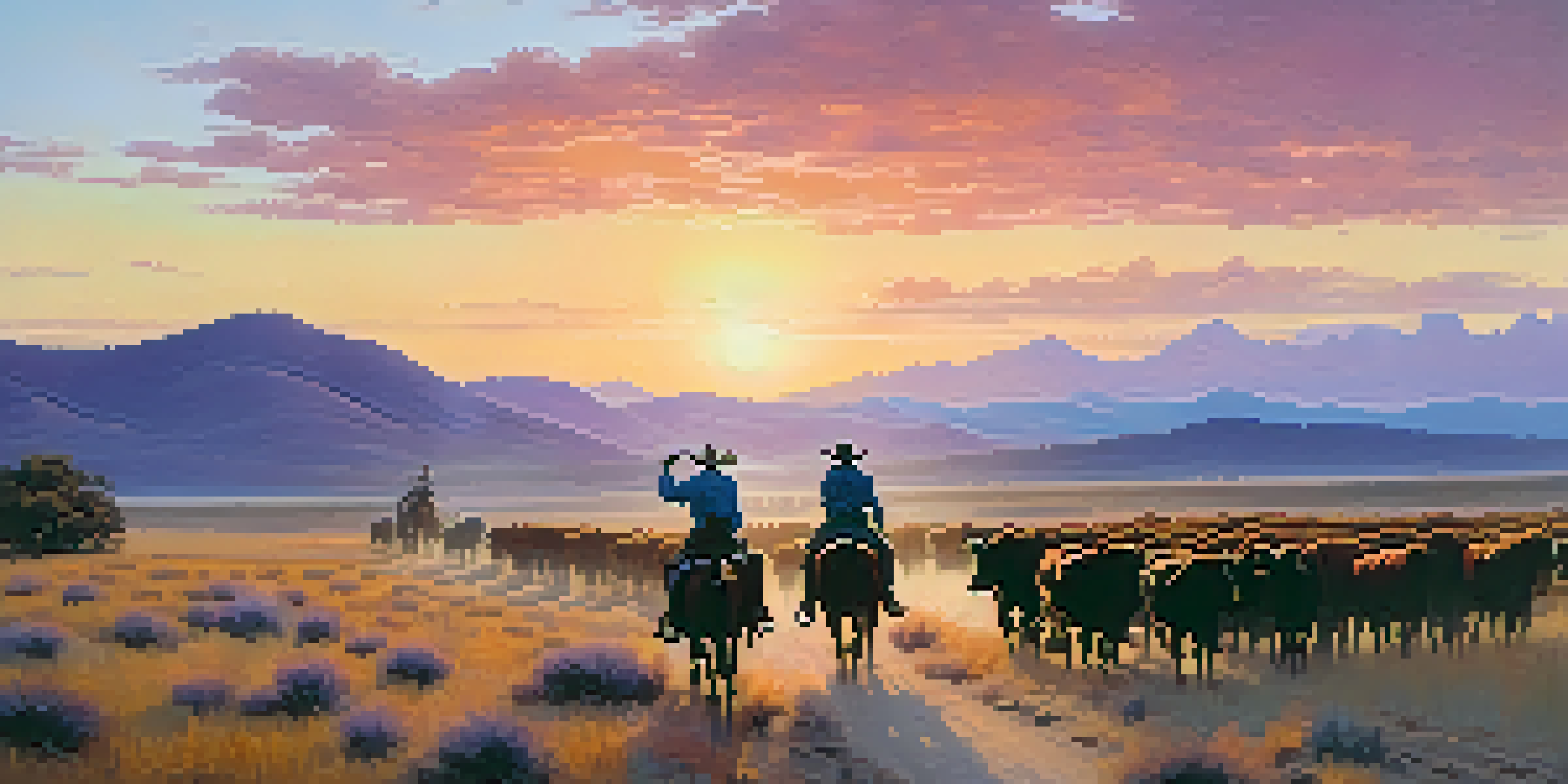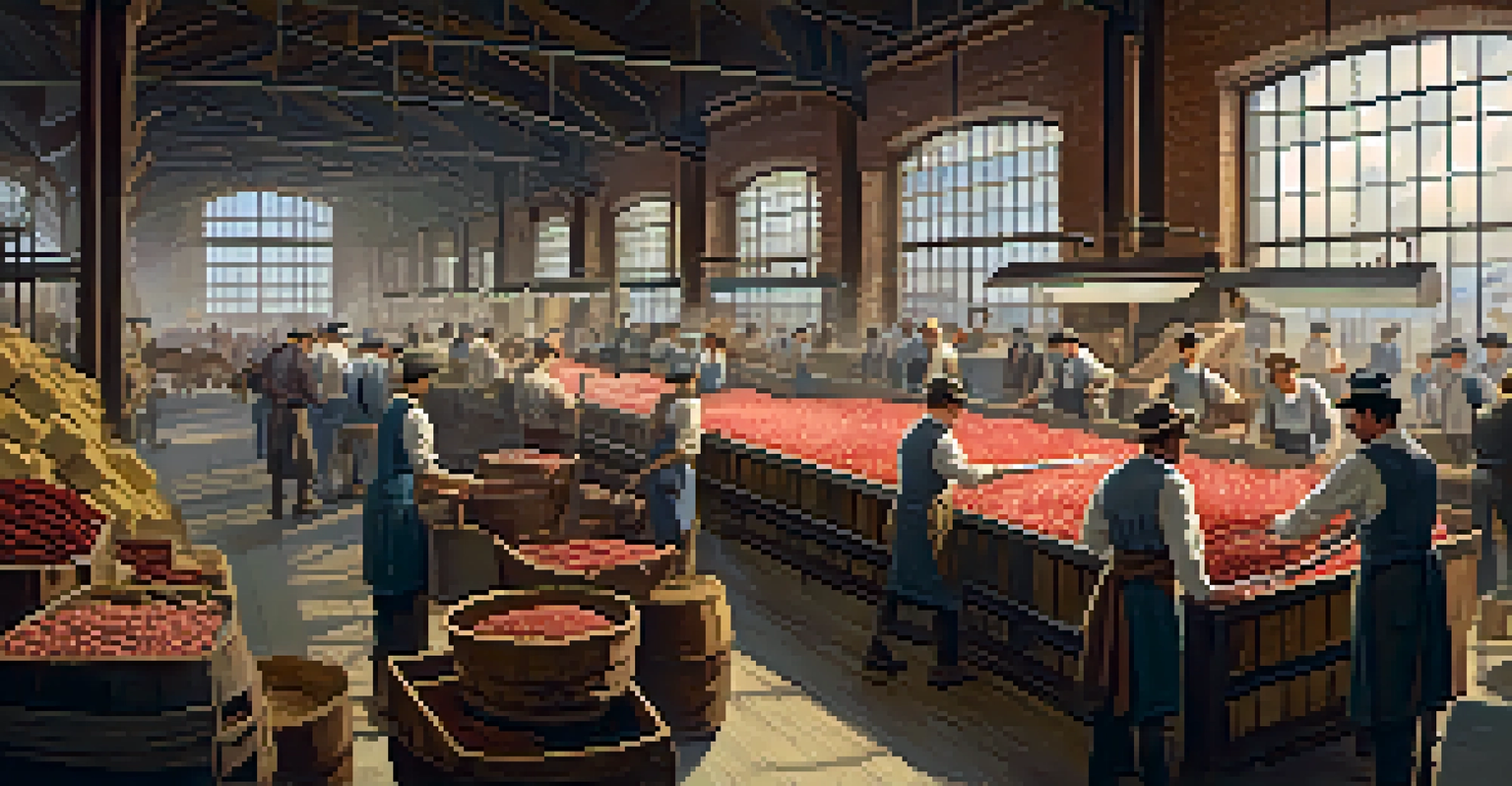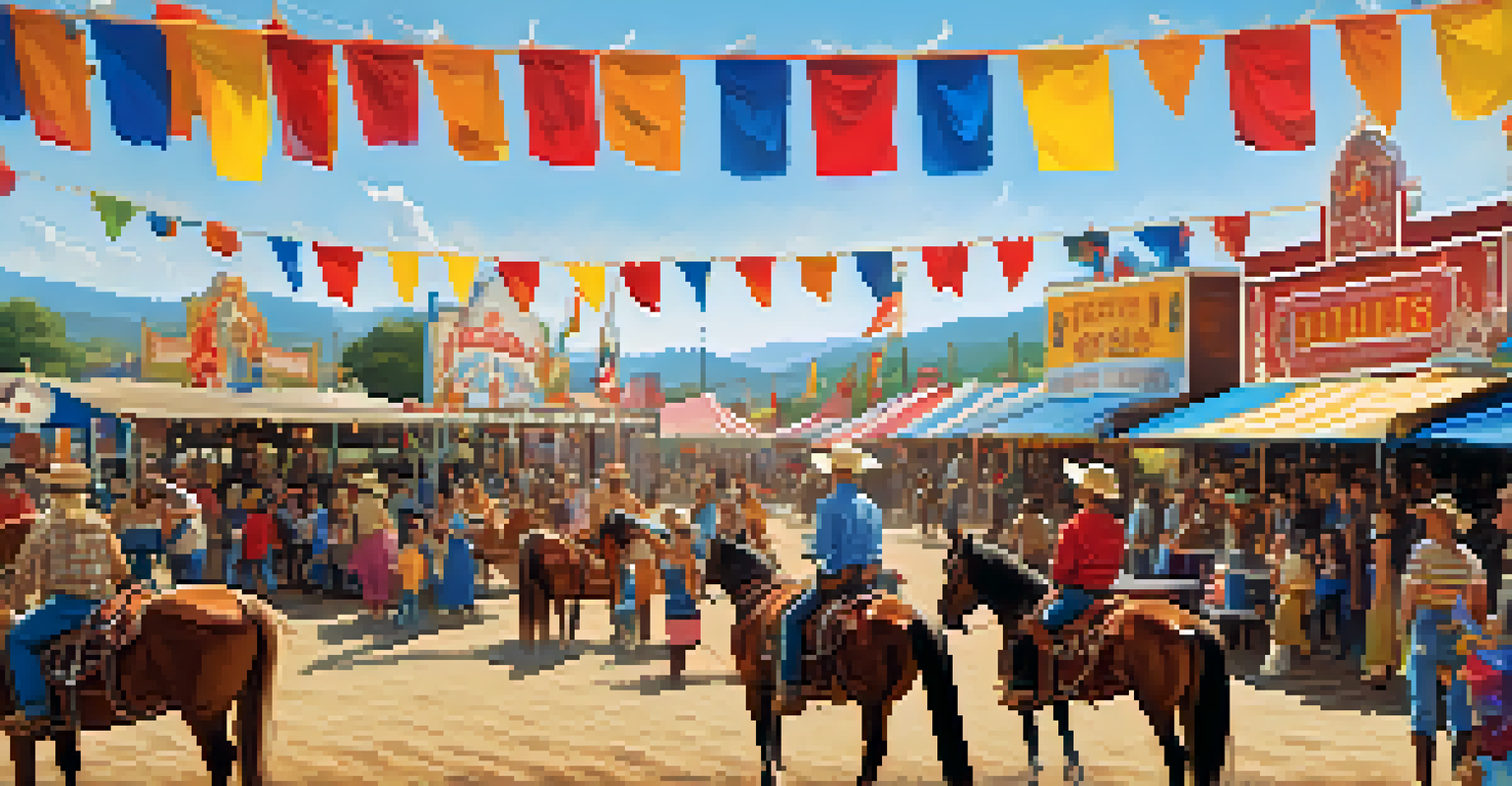The Cattle Drive Era: Economic Growth and Cultural Shifts

Understanding the Cattle Drive Era and Its Origins
The Cattle Drive Era, primarily spanning from the late 1860s to the 1890s, marked a significant period in American history. Originating in Texas, this era arose from the need to transport cattle to railheads for shipment to markets in the East. The booming demand for beef during this time catalyzed the growth of cattle ranching, which became a cornerstone of the American economy.
The cowboy is a symbol of the American spirit; he embraces independence and adventure, and his legacy continues to shape our culture.
Before the era of cattle drives, cattle were often left to roam freely, leading to a decentralized system of ranching. However, as urban areas expanded and the population surged, the need for more structured cattle transportation became apparent. This shift not only fueled the cattle industry but also sparked an influx of settlers into the West, eager to stake their claim in this burgeoning market.
As cattle drives grew in popularity, iconic routes like the Chisholm Trail emerged, becoming vital arteries for the movement of cattle. These trails connected ranches in Texas to railroads in Kansas, showcasing the importance of infrastructure in supporting economic growth. The era was not merely about cattle; it was about transforming the landscape of the American economy.
Economic Impacts of the Cattle Drive Era
The cattle drive era was a catalyst for economic growth, particularly in regions like Texas and the Great Plains. It created jobs for cowhands, teamsters, and various support roles, contributing to a thriving economy. The revenue generated from cattle sales provided ranchers with capital to invest in their operations, leading to increased productivity and expansion.

Moreover, the demand for beef during this time led to the establishment of meatpacking plants, further stimulating local economies. Cities like Chicago became central hubs for meat processing, attracting labor and investment. This economic boom had ripple effects, fostering the growth of associated industries, such as feed supply and transportation.
Economic Growth Fueled by Cattle Drives
The cattle drive era significantly boosted the American economy by creating jobs, stimulating local markets, and establishing vital trade networks.
The cattle drive era also facilitated trade between previously isolated regions, enhancing the overall economic landscape of the United States. As cattle were driven across the plains, a network of commerce emerged, connecting ranchers to markets and consumers. This interconnectivity laid the foundation for modern agricultural practices and trade routes.
Cultural Shifts During the Cattle Drive Era
As cattle drives became a way of life, they also ushered in significant cultural changes. The cowboy culture, characterized by rugged individualism and a sense of adventure, began to take shape during this era. Cowboys became symbols of freedom and the frontier spirit, influencing literature, music, and art across the nation.
Ranching is more than a job; it’s a way of life that connects us to the land and to each other.
The mixing of diverse cultures also played a crucial role in shaping the identity of the American West. As cattle drives attracted various groups, including Mexican vaqueros and African American cowboys, a rich tapestry of cultural exchange emerged. This blending of traditions contributed to a unique cowboy culture that continues to resonate today.
Additionally, the cattle drive era instilled a sense of community among ranchers and cowhands. Shared experiences on long drives fostered camaraderie and established lasting friendships. These cultural shifts not only shaped the lives of those involved but also left a lasting legacy in American folklore and mythology.
The Role of Technology in Cattle Drives
Technology played an integral role in the evolution of cattle drives, significantly enhancing their efficiency and safety. The introduction of railroads in the late 19th century revolutionized the transportation of cattle, allowing for faster and more cost-effective shipping to markets. This advancement reduced the need for long, arduous drives across the plains.
In addition to railroads, innovations in fencing and ranching equipment improved the management of cattle. Barbed wire, for instance, became a game changer, allowing ranchers to enclose their lands and protect their herds from wandering. These technological improvements increased productivity and helped establish more permanent ranching operations.
Cultural Identity Shaped by Cowboys
The cattle drive era fostered a unique cowboy culture that blended diverse traditions and became a lasting symbol of the American frontier spirit.
The impact of technology extended beyond logistics; it also transformed the cowboy's daily life. New tools and machinery made tasks easier, allowing cowhands to focus on more intricate aspects of ranching. This shift not only changed the way cattle were raised but also altered the cultural landscape of the cowboy lifestyle.
Challenges Faced During the Cattle Drive Era
Despite the booming economy and cultural vibrancy, the cattle drive era was not without its challenges. The sheer scale of cattle drives often led to conflicts over land use, as ranchers competed for grazing rights and water sources. These disputes could escalate into violence, highlighting the tension between different factions in the West.
Weather also posed significant threats to cattle drives, with unpredictable storms and droughts creating difficult conditions for cowhands. A sudden downpour could turn a dusty trail into a muddy quagmire, complicating the journey. Similarly, extreme heat could lead to cattle losses, putting pressure on ranchers to adapt quickly.
Moreover, the rise of ranching led to overgrazing and environmental degradation in some areas. As cattle populations surged, the delicate balance of the ecosystem was disrupted, prompting concerns about sustainability. These challenges forced ranchers to reevaluate their practices and seek more sustainable methods of cattle management.
The Decline of the Cattle Drive Era
By the late 19th century, the cattle drive era began to wane, driven by several factors. The expansion of railroads reduced the need for long drives, as cattle could now be shipped directly from ranches to markets. This change not only altered the logistics of the cattle industry but also marked the end of an iconic way of life.
Additionally, the rise of large-scale ranching operations led to the consolidation of land and resources, diminishing opportunities for smaller ranchers and cowhands. Many traditional cattle drives faded away as ranchers opted for more efficient methods of cattle management. The landscape of the West transformed, with ranching becoming more industrialized.
Technological Advances Transformed Ranching
Innovations such as railroads and barbed wire improved cattle management and transportation, revolutionizing the ranching industry.
As the cattle drive era drew to a close, its cultural legacy remained. The stories, songs, and folklore of cowboys continued to thrive, capturing the imagination of future generations. Though the era itself ended, the spirit of the cowboy lived on, influencing American culture and identity for years to come.
Legacy of the Cattle Drive Era in Modern America
The legacy of the cattle drive era continues to resonate in modern America, shaping not only the agricultural landscape but also the cultural identity of the nation. The image of the cowboy remains a powerful symbol of the American spirit, representing values like independence and adventure. This enduring archetype is celebrated in literature, film, and music.
Moreover, the cattle industry still plays a vital role in the economy, with ranching practices evolving to meet contemporary demands. Modern ranchers employ advanced techniques for sustainable cattle management, learning from the lessons of the past to ensure the industry’s future viability. This evolution reflects the resilience of the ranching community.

Additionally, the cultural influences of the cattle drive era can be seen in festivals, rodeos, and other events that celebrate cowboy heritage. These gatherings not only honor the history of ranching but also foster community among those who share a love for this way of life. The legacy of the cattle drive era serves as a reminder of the dynamic interplay between economy and culture in shaping American history.